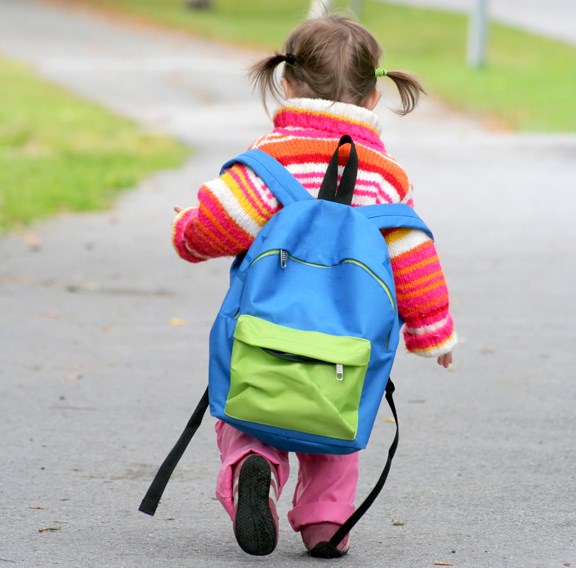I have lived near a number of different schools and one thing they all share in common is traffic jams.
As a local resident you soon learn not to try to get by the school in the morning and afternoon. It's a zoo. Parent's pull up and double and sometimes triple park, they jaywalk with their kids often within yards of a crosswalk and/or a crossing guard and then they dart back through traffic to get on with their day. It's a nightmare and certainly not safe.
The children are learning that it's OK to ignore the crosswalk and crossing guards. They learn to dodge and weave between cars. And they learn that they are not capable of getting themselves to school.
Those aren't the lessons parents plan on teaching. They want to keep their kids safe. I know that if asked, they would also say that they want their children to become capable and independent.
Delivering children to their school has become an accepted practice, but one we need to take a second look at. Is this a helpful and healthy practice for our school-aged children? The answer is no.
We want our kids to get more exercise and we want them to become capable. Having them walk to school goes a long way to achieving these parenting goals. When they learn how to get from one place (home) to another (school) they are taking control of part of their daily life. They are also getting regular exercise.
But it's not a question of opening the door on the first day of school and sending them off to class. It's a process, and one that can start today.
Walk with your child to school. While you walk you are talking to her about the route, about how to safely cross the road and pointing out the homes of neighbours you know well. After a couple of days, you walk but she talks. She tells you how to get to and from school safely. The next step is that she walks and you follow. Soon you will feel comfortable that she knows what she's doing and you will be able to let her head off on her own.
For your kindergarten children, school likely represents the first time they will be away from constant direct supervision and you will not only not know what they are up to all day, you won't have a way to find out. It's not like daycare or preschool. They will make friends you will never meet; they will do things you'll never discover (be honest now, what did you do at school you still haven't told your parents?).
During the walk to school, kids can make the transition from being your child to being Mrs. Simpson's student. It's not unlike the transition you need to make when travelling from work to home.
It's difficult for children to sit still (now there's a revelation!). When they walk to school they are guaranteed to do better in class because they will have had some exercise before they are expected to sit at their desk and pay attention.
If your child needs to take public transit, follow the same pattern. Travel with them on the bus to and from school.
The goal is to allow your child to start to take some responsibility for himself, to have him learn how to get from one place to another on his own in the safe environment of your community, to have him get some exercise and fresh air and have time to socialize with other kids before he gets to class.
It's important to be aware of these goals when planning how your child will get to and from school. For example: what if your child has to cross a very busy street and you simply can't let them go alone? One parent solved the problem by taking her kids across that street, saying goodbye and having them walk the rest of the way on their own.
If there are no other kids walking to school and you don't want your child to walk alone, start the year by walking with them. But then, at the first opportunity, recruit other parents to the idea. If there is a school or class newsletter, ask if you can put in a request for other walkers or attend the parent committee meeting and make the pitch.
It will help if your child's teacher is on side. Most will be because they like to see the kids arrive ready to settle down to work. Also, the children who get themselves to school are often responsible in other areas of their lives, which simply makes them better students.
Getting to and from school may not seem like a big developmental step, but it is. Our job is to help our children to become capable young adults and part of that is knowing how to get places.
So open the door, kiss your now well-trained child goodbye and know that you are doing the right thing.
Kathy Lynn is a professional speaker and author. Sign up for her newsletter at parentingtoday.ca.



